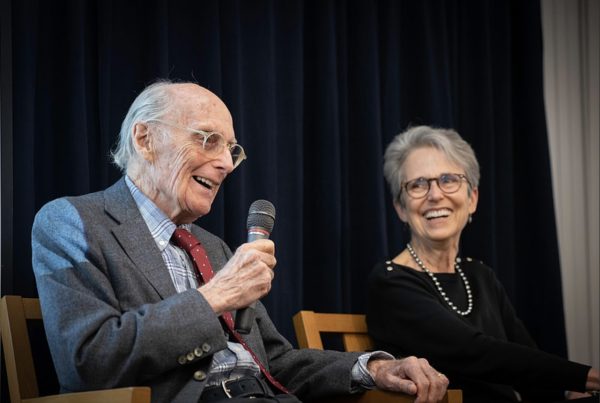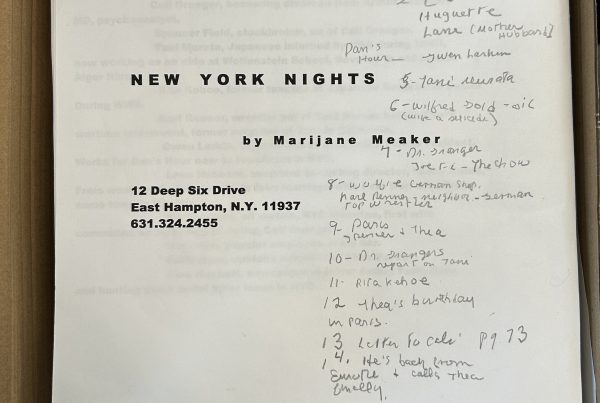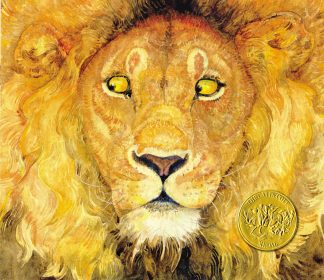
Lion and Mouse by Jerry Pinkney, Little Brown 2009
Wordless books are ones in which the story is told through illustrations and the story creates an opportunity for teachers to engage in a multitude of literacy activities.
I have read aloud to young children, who participate by interpreting the pictures with their own storytelling. It is a interactive reading experience. We can open up Jerry Pinkney‘s Caldecott winning Lion and Mouse and ask, “What is happening in this picture? What is the mouse doing? What do you see?” There’s no right answer, so there can be many versions of the story.
One of my all time favorites is Bow Wow Bugs A Bug by Megan Montague Cash and Mark Newgarden.
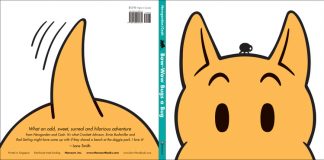
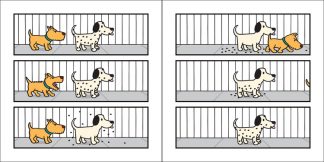
Interior Spread http://www.bow-wowbooks.com/work/#/bow-wow-bugs-a-bug/
“What an odd, sweet, surreal, and hilarious adventure from Newgarden and Cash. It’s what Crockett Johnson, Ernie Bushmiller, and Rod Serling might have come up with if they shared a bench at the doggie park. I love it!”
–Lane Smith
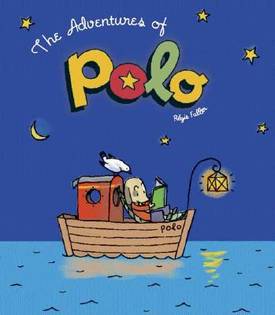
by Regis Faller, Roaring Brook
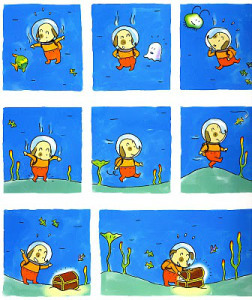
The Adventures of Polo, we can ask beginning writers to create dialogue and label quotations using sticky-notes. Grown ups may want to take diction from the pre-reading children.
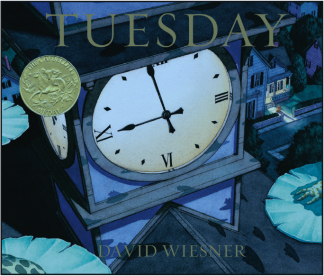
Tuesday by David Wiesner, HMH
David Wiesner is the acknowledged master of the wordless picture book format. He has written about his creative process on his author blog, davidwiesner.com.
Tuesday is a Caldecott Medal winning story about frogs levitating on their lily pads and zooming through a community. Houghton Mifflin Harcourt has provided this discussion guide for librarians and teachers to share his work.
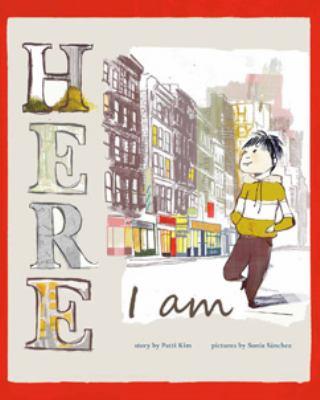
Here I Am written by Patti Kim and illustrated by Sonia Sanchez is a graphic novel in picture book of an young boy’s immigration experience. Will he be able to cope in this new land? Learn the language? Make friends?
This is an accessible format for the new arrival in any community setting and certainly a window for those welcoming the newcomer to classrooms or libraries.
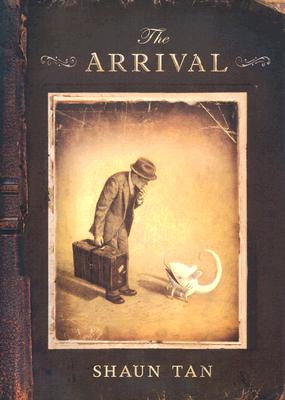 I was reminded recently that wordless books are not just for young children. Shaun Tan’s The Arrival speculative fiction that perfectly describes the immigration experience of entering a new world of incomprehensible language, unusual food, unknown culture, and unrecognizable customs.
I was reminded recently that wordless books are not just for young children. Shaun Tan’s The Arrival speculative fiction that perfectly describes the immigration experience of entering a new world of incomprehensible language, unusual food, unknown culture, and unrecognizable customs.
New Wordless Books for 2017
In 2004, Barbara Lehman constructed a sweet fantasy using simple lines and soft water color, guache paintings in The Red Book (Houghton Mifflin, 2004)
I wrote at the time of publication in Teaching PreK-8 that “A young girl walking on a city street finds a red book peeking out of a snowbank. She gazes into one of the pages and sees a map, then a tropical island. There is a figure walking on a beach and as we look closer, we see a boy. He finds a red book, one corner not covered in sand. He peers into a picture of a city, closer and closer he sees the girl looking at a book, looking at him!”
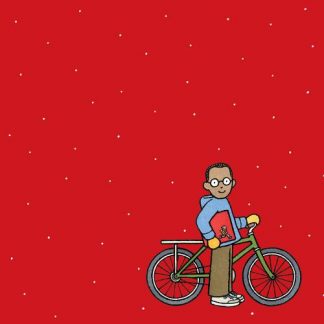
This year she takes us back into that world with Red Again. This companion volume continues the original story but can also be enjoyed on its own. We watch as the boy with the bicycle finds the red book and embarks on a surrealistic adventure of his own.
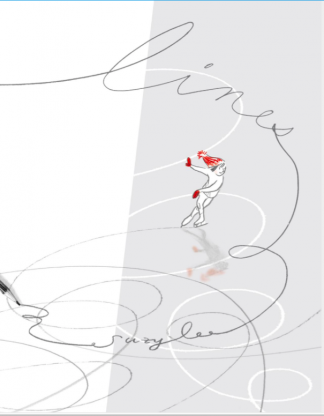
Almost ten years ago, Suzy Lee stunned jaded readers with Wave. That was a wordless dance of form and light. Her recent Lines is a meditation on trial and error. We witness the patience, practice, and perseverance of an ice skater and the artist finding their way.
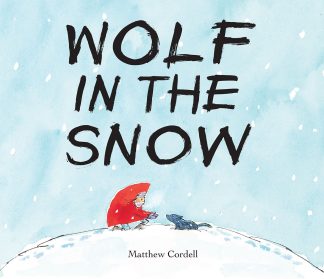
I am now going to tell the truth. I do play favorites. There are authors and illustrators that immediately get read as soon as the books arrive. Katherine Paterson, Lauren Stringer, Phyllis Root, Adam Rex, Betsy Bowen, Emily Jenkins, Adam Gidwitz to name a few. Mathew Cordell is one. He always surprises and amazes me. A seemingly simplistic story of kindness given and kindness repaid, Wolf in The Snow has already recieved a 2017 Boston Globe/Hornbook Honor as of this writing. Mathew describes his creative process with his research notes and process art this blog posting on his website. Kirkus “What distinguishes this book are the many feelings that Cordell’s pen-and-ink–with-watercolor illustrations capture so well—cold, fear, courage, exhaustion, relief—keeping readers hooked to the end. Deeply satisfying.”
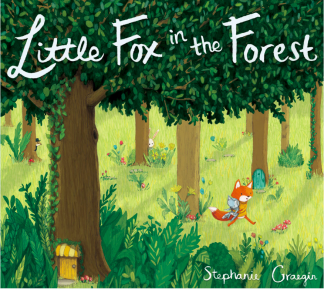 Little Fox in the Forest is Stephanie Graegin’s debut solo picture book.
Little Fox in the Forest is Stephanie Graegin’s debut solo picture book.
The adventure begins when a real fox absconds with a little girl’s stuffed one and the chase is on into a fantastical setting populated by a variety of woodland creatures. Almost cozy, never too scary, we are enchanted by this new and enchanting tale.
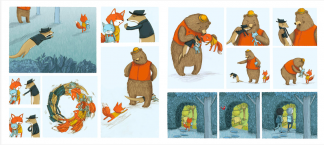
Interior Spread from https://www.graegin.com/little-fox-in-the-forest
Take Away: Books without text support literary curriculum goals by allowing students to identify plot, character and context. Students of a diversity of skill and age levels can benefit from unraveling a sequence of events. Struggling readers will find success in creating their own stories to pair with pictures.
Bibliography
Cordell, Matthew. Wolf in the Snow. New York : Feiwel and Friends, 2017.
Faller, Régis. The Adventures of Polo. New Milford, CT: Roaring Brook, 2006.
Graegin, Stephanie. Little Fox in the Forest. , 2017.
Kim, Patti, and Sonia Sánchez. Here I Am. North Mankato, Minnesota: Capstone Young Readers, 2014.
Lee, Suzy. Wave. San Francisco, Calif: Chronicle Books, 2008.
Lee, Suzy. Line. San Francisco, Calif: Chronicle Books, 2017.
Lehman, Barbara. The Red Book. Boston: Houghton Mifflin Co, 2004.
Lehman, Barbara. The Red Again. Boston: Houghton Mifflin Co, 2017.
Newgarden, Mark and Megan Montague Cash, Bow Wow Bugs A Bug: Houghton Mifflin Harcourt, 2007.
Pinkney, Jerry, and Aesop. The Lion & the Mouse. New York: Little, Brown and Co. Books for Young Readers, 2009.
Tan, Shaun. The Arrival. Scholastic, 2007. Print.
Wiesner, David. Tuesday. Boston: Clarion, 1991.

